Released in March 2021, the Realme GT 5G was touted as a flagship killer: Not only was it packed with some very attractive features, such as a Qualcomm Snapdragon 888 5G chipset, a 120 Hz AMOLED display, 65W fast charge and Sony 64MP triple camera, it was aimed at the budget-minded user, with a price belonging in our High-end ($400-$599) segment. As for audio, the phone is equipped with Dolby Atmos stereo speakers promising immersive surround sound as well as smart environment-based audio enhancement.
Audio specifications include:
- Two speakers (top and bottom)
- Headphone jack 3.5mm input
- Dolby Atmos
- Hi-Res Audio (24 bits/192 kHz)
About DXOMARK Audio tests: For scoring and analysis in our smartphone audio reviews, DXOMARK engineers perform a variety of objective tests and undertake more than 20 hours of perceptual evaluation under controlled lab conditions. This article highlights the most important results of our testing. Note that we evaluate both Playback and Recording using only the device’s built-in hardware and default apps. (For more details about our Playback protocol, click here; for more details about our Recording protocol, click here.)
Test summary
Scoring
Sub-scores and attributes included in the calculations of the global score.
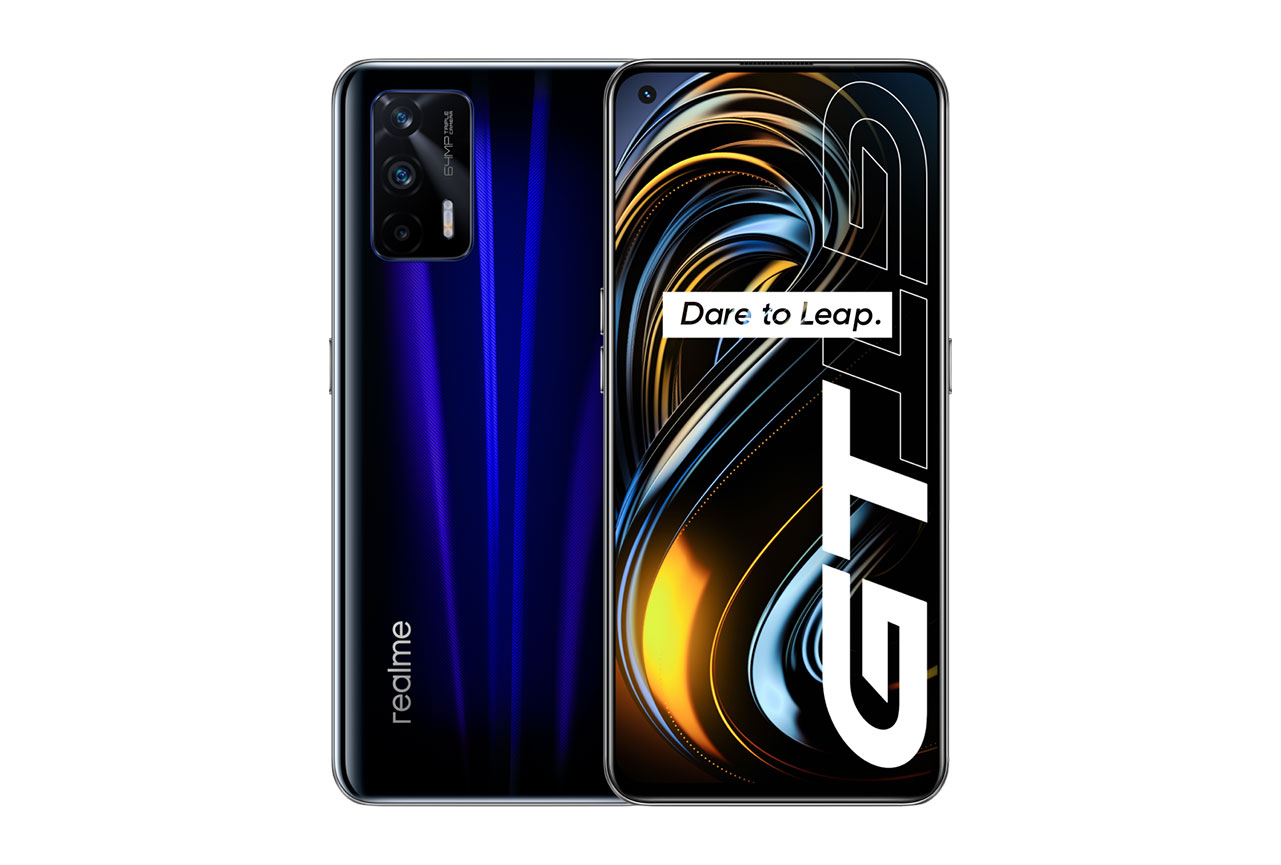
Realme GT 5G


 151st
151st 21st
21stPlayback
Pros
- Very good artifacts performance
- Decent maximum volume
Cons
- Midrange-focused tonal balance
- Weak dynamic attributes
Recording
Pros
- Great loudness in recordings
Cons
- Unbalanced frequency response
- Recordings are compressed and full of artifacts
- Poor SNR
With an overall Audio score of 57, the Realme GT 5G is among the lowest-scoring devices we’ve tested thus far, all segments combined.
Despite the brand’s collaboration with Dolby Atmos and the phone’s Hi-Res certification, the Realme is quite challenged in the playback domain. Besides exhibiting noticeable resonances, its speakers turn in a particularly nasal and quite aggressive tonal balance, lacking both low- and high-end extension. Punch is weak and bass precision is very limited, but attack is decent from nominal to maximum level. This, along with average results in the spatial category, a satisfying maximum volume and good artifacts management, makes the GT 5G passable for playing games. However, its virtues aren’t sufficient to outweigh the phone’s shortcoming when it comes to listening to music or watching movies.
Unlike in playback, no use case is spared in recording, as captured audio exhibits too many defects. For starters, the frequency response suffers from a severe lack of treble and high-end extension, which makes for a highly unnatural sound. Further, the Dynamics sub-score is only two points higher than the lowest-scoring phone tested to date, and spatial results vary greatly depending on the recording situation. Finally, while loudness is good regardless of the use case, artifacts are much too present.
Sub-scores explained
The DXOMARK Audio overall score of 57 for the Realme GT 5G is derived from its Playback and Recording scores and their respective sub-scores. In this section, we’ll take a closer look at these audio quality sub-scores and explain what they mean for the user.
Playback
Timbre tests measure how well a phone reproduces sound across the audible tonal range and takes into account bass, midrange, treble, tonal balance, and volume dependency.
Essentially, the Realme GT 5G’s speakers deliver a midrange-focused frequency response which defines the phone’s overall timbre as quite aggressive and nasal. Bass is lacking, in both extension and amplitude. Treble is also recessed, and somewhat resonant.
As for the predominant midrange, while its lower register lacks warmth and body, its upper range lacks clarity, despite occasional resonances that are exacerbated by the increase in volume. From a use case point of view, the phone’s timbre restitution fares quite poorly across all our tested scenarios and music genres (pop-rock, hip-hop, classical, electronic, movies, and games).
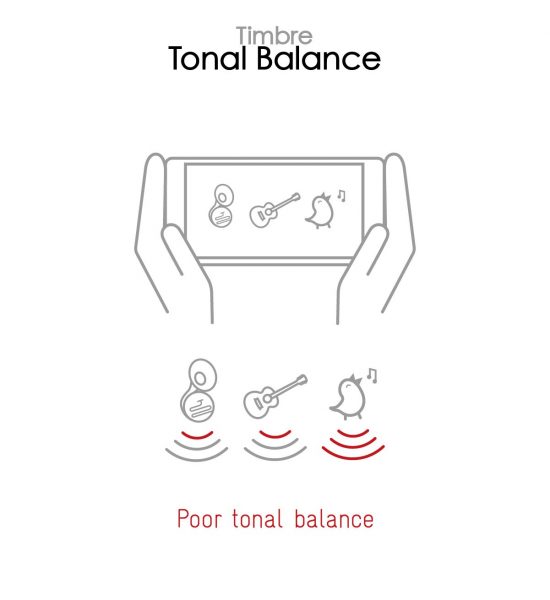
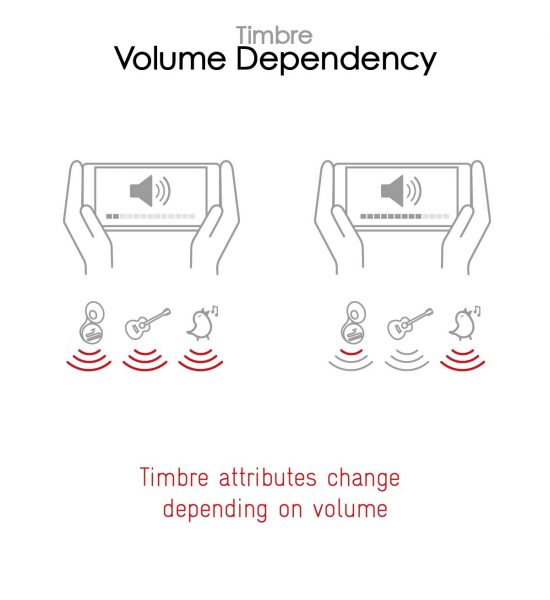

Dynamics
Realme GT 5G
57
81
DXOMARK’s dynamics tests measure how well a device reproduces the energy level of a sound source, and how precisely it reproduces bass frequencies.
Besides tonal imbalance, the strong lack of lower frequencies also results in feeble dynamics. The bass envelope is inaccurate due to a lack of sustain, and punch is too weak.
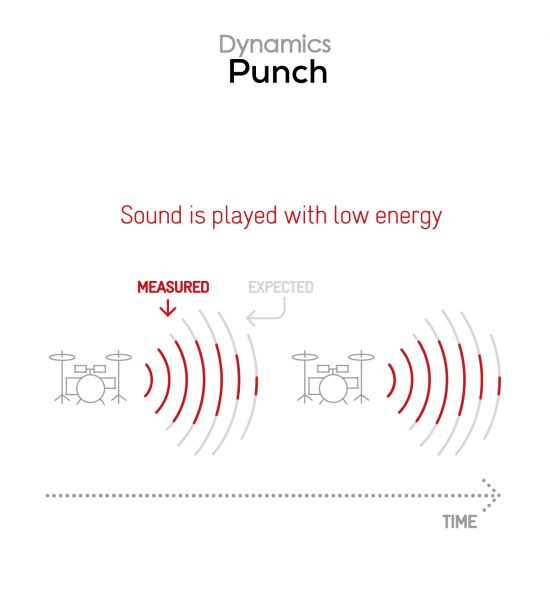
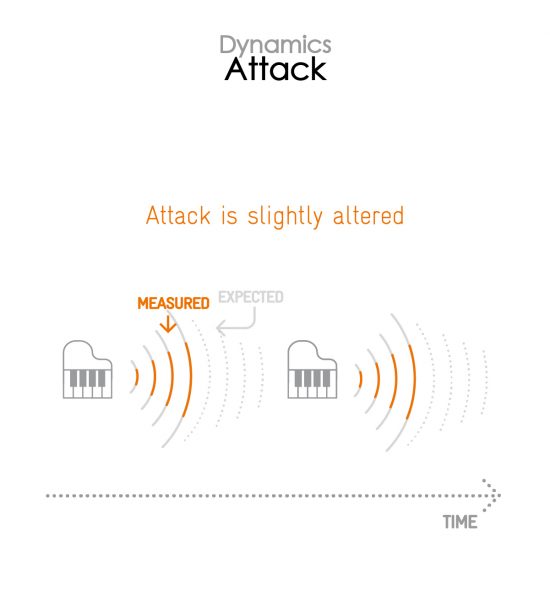
That all said, attack is decent, at nominal as well as maximum volumes. It is, however, less sharp at softer volumes.

Spatial
Realme GT 5G
52
88
The sub-attributes for perceptual spatial tests include localizability, balance, distance, and wideness.
Possibly thanks to Realme’s collaboration with Dolby, the GT 5G speakers fare significantly better in the spatial domain, providing a fairly wide and immersive sound stage. Although it is a bit blurry in some cases (as in portrait mode), localizability is decent, and so is balance, albeit slightly off-centered to the right side of the device in landscape mode, i.e. a bit further down in portrait mode.
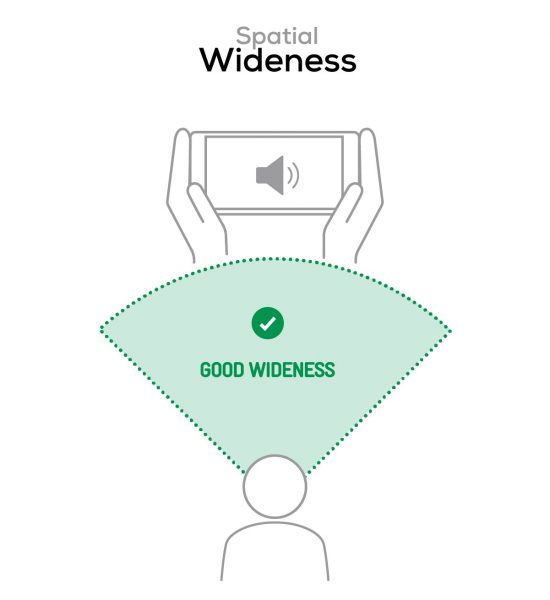
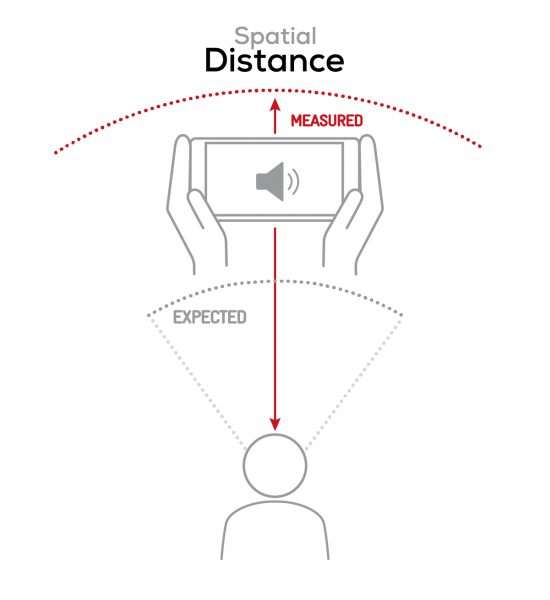
That said, distance rendering is inaccurate: important elements, such as voices, are perceived farther than they should. In addition, they sound as if they were veiled, and do not offer any proper presence or clarity. And on another note, the stereo scene doesn’t rotate accordingly in inverted landscape.

Volume
Realme GT 5G
73
91
Volume tests measure both the overall loudness a device is able to reproduce and how smoothly volume increases and decreases based on user input.
The Realme GT 5G’s speakers produce a decent maximum volume, with good loudness and rather convincing dynamics. Alas, the listening experience at that volume is affected by a rather aggressive timbre rendering. Further, minimum volume is ill-tuned, resulting in a below-average intelligibility.
| Hip-Hop | Classical | |
| Realme GT 5G | 76.3 dBA | 70.6 dBA |
| Oppo Reno5 Pro+ 5G | 74.2 dBA | 70.5 dBA |
| Xiaomi Redmi K40 Gaming | 79.7 dBA | 77.4 dBA |

Artifacts
Realme GT 5G
91
113
Artifacts tests measure how much source audio is distorted when played back through a device’s speakers. Distortion can occur both because of sound processing in the device and because of the quality of the speakers.
In our playback tests, the Realme GT 5G eventually held its own when it came to managing sonic artifacts: aside from the common artifacts encountered with most devices subjected to our synthetic signals, the Realme GT 5G is overall devoid of artifacts regardless of the use case or the music genre.
Recording

Timbre
Realme GT 5G
44
91
As a recording device, the Realme GT 5G received one of the lowest timbre scores of all the phones we have tested to date. This is due to numerous imperfections in the midrange, a very resonant lower midrange, and the severe lack of high-end extension visible in the graph below (blue curve).
These timbre shortcomings result in deeply unnatural (muffled, resonant, canny and/or nasal) recordings. Further, in loud environments, the midrange resonances can reach down to the bass register, making it sound fairly boomy.

Dynamics
Realme GT 5G
42
81
The Realme GT 5G doesn’t prove much more skilled at capturing dynamics, with a sub-score only two points higher than the Black Shark 2 Pro, which came in last in this category. Impaired by the tonal imbalance, the signal-to-noise ratio is very low across all use cases, and the sound envelope, also affected by resonances and artifacts, lacks precision. In a loud environment for example, percussive elements are either crushed by compression, or imprecise.
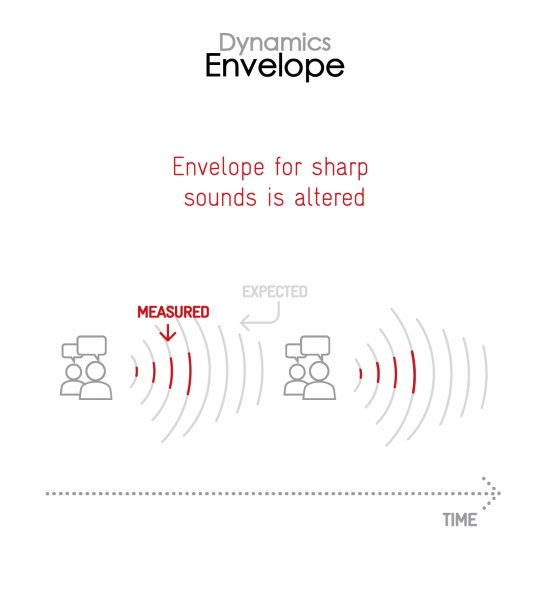
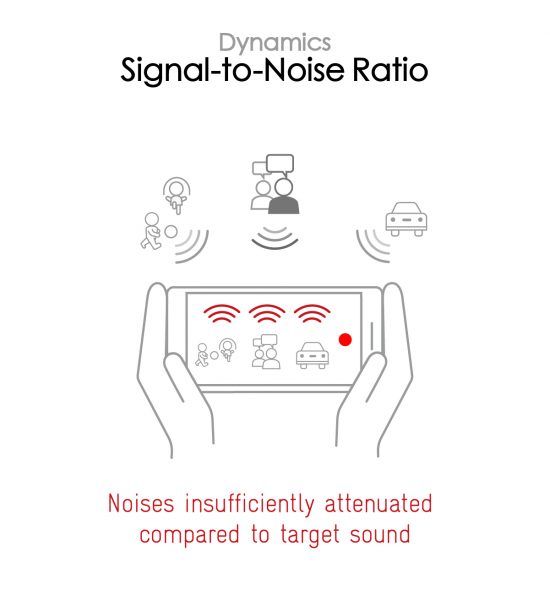

Spatial
Realme GT 5G
49
78
Spatial attributes in recorded audio seem to be particularly dependent on the use case. For example, while distance perception is fairly realistic in selfie videos, it is a bit too distant in life videos. Wideness is average in selfie videos, but quite narrow in life videos, especially in urban surroundings. On the other hand, localizability of the target sound is very blurry regardless of the use case, due to the myriad of artifacts and the poor tonal balance.

Volume
Realme GT 5G
58
99
The Realme GT 5G secures great loudness for content recorded in any type of situation, that said, memos are a bit less well endowed than videos. On the other hand, the maximum level reachable without distortion is very low, as further developed in the next paragraph.
Here are our test results, measured in LUFS (Loudness Unit Full Scale). As a reference, we expect loudness levels to be above -24 LUFS for recorded content:
| Meeting | Life Video | Selfie Video | Memo | |
| Realme GT 5G | -19.7 LUFS | -15.1 LUFS | -14.3 LUFS | -16.7 LUFS |
| Oppo Reno5 Pro+ 5G | -25.5 LUFS | -22.9 LUFS | -21.9 LUFS | -21.4 LUFS |
| Xiaomi Redmi K40 Gaming | -27.7 LUFS | -20.2 LUFS | -18.9 LUFS | -21.7 LUFS |

Artifacts
Realme GT 5G
54
97
Unlike in playback, the Realme GT 5G as a recording device does not do a good job of keeping undesirable sounds at bay. The most problematic artifact is compression, which is noticeable in every use case. Unintended pumping can even occur in life videos made in loud environments as well as distortion and vocal sibilance.
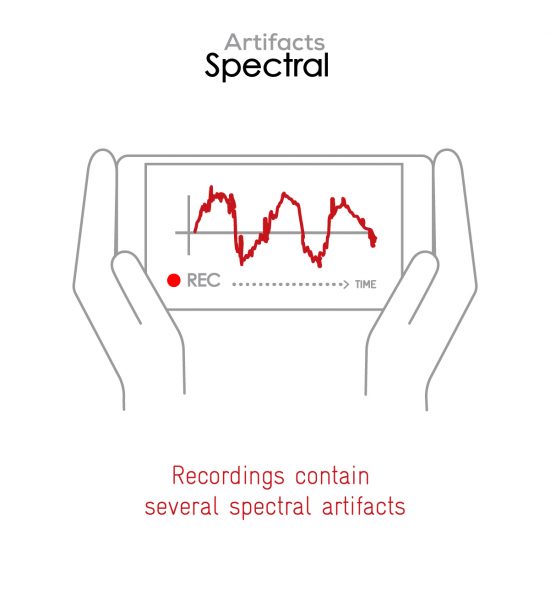
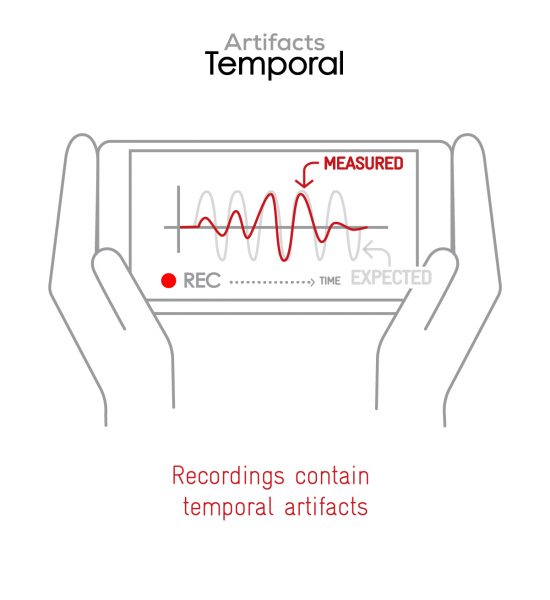
In other scenarios, such as filming selfie videos in loud environments, voices are intermittently buried under loud background levels, then coming back to nominal level. Vocal intelligibility and more generally recording quality is greatly impaired by those unavoidable artifacts.
You can check for artifacts yourself in this sample recording:

Background
Realme GT 5G
15
60
In view of the previous observations, it should come as no surprise that the GT 5G’s background capture isn’t up to par. Not only does it sound muffled and unbalanced, but it is also very compressed as well as distorted in most use cases, and produces resonances in the low mids. Last but not least, the background as a whole sometimes moves from left to right.
Conclusion
While the Realme GT 5G certainly boasts many interesting abilities, audio isn’t one of them. Out of all our playback and recording use cases, the phone can only be considered passable for gaming, thanks to satisfying maximum volume, average spatial results, and a good skill for keeping sonic artifacts to a minimum. Otherwise, its numerous shortcomings prevent it from being a true flagship-killer, at least as far as audio is concerned!



DXOMARK encourages its readers to share comments on the articles. To read or post comments, Disqus cookies are required. Change your Cookies Preferences and read more about our Comment Policy.